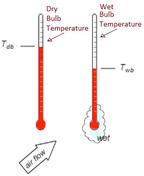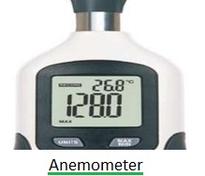Absolute vs. Specific vs. Relative Humidity: Key Differences Explained
Advertisement
The amount of water in the air, which we call humidity, can be measured in several ways. These measurements help us understand how much moisture is present and how it behaves. We generally categorize humidity into three main types: absolute, specific, and relative. Let’s break down each of them.
Absolute Humidity (AH)
- Definition: Absolute humidity refers to the mass of water vapor present within a given volume of air. Essentially, it tells you how much water is packed into a particular space.
- Formula: AH = Mass of water vapor / Volume of air
- Example: If you have a 2 cubic meter parcel of air containing 10 grams of water vapor, the absolute humidity is 5 grams per cubic meter (5 g/m³).
Specific Humidity (SH)
- Definition: Specific humidity focuses on the mass of water vapor compared to the total mass of the air parcel, including both dry air and the vapor. It tells you what proportion of the air’s mass is actually water vapor.
- Formula: SH = Mass of water vapor / Total mass of air
- Example: If a 1 kg air parcel contains 1 gram of water vapor, the specific humidity is 1 gram per kilogram (1 g/kg).
- Key Points:
- Specific humidity considers the ratio of water vapor mass to the total air mass.
- It’s unaffected by changes in the volume of the air parcel.
- Temperature changes do not directly affect specific humidity.
- The specific humidity and mixing ratio of an air parcel remain consistent as long as no water vapor is added or removed.
Relative Humidity (RH)
- Definition: Relative humidity measures the amount of water vapor in the air relative to the maximum amount of water vapor the air could hold at its current temperature. It’s expressed as a percentage.
- Concept: Think of it this way: How “full” is the air with water vapor, compared to its full capacity at that temperature?
- Key Points:
- Warm air can hold more water vapor than cold air.
- For the same absolute or specific humidity, cooler air will have a higher relative humidity, and warmer air will have a lower relative humidity. This is because warmer air has a greater capacity for holding water vapor.
In Summary:
- Absolute Humidity tells you the concentration of water vapor in a given space.
- Specific Humidity tells you the proportion of water vapor compared to the total air mass.
- Relative Humidity tells you how close the air is to being saturated with water vapor at its current temperature.
Understanding these three measures of humidity helps in various fields, from weather forecasting to understanding comfort levels in different environments.
Advertisement
 T&M
T&M 







